EV Battery Waste: 5 Myths We Hear All the Time, and Why They’re Wrong
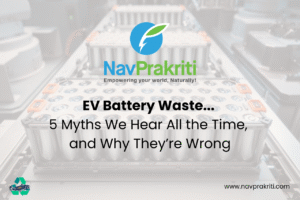 >
>
EV Battery Waste: 5 Myths We Hear All the Time, and Why They’re Wrong
Let’s be honest: electric vehicles (EVs) have stirred up a lot of opinions, some based on facts, others… not so much. One of the biggest areas of confusion? EV battery waste.
We get it. Between viral WhatsApp messages and dramatic headlines, it’s easy to believe that dead EV batteries are going to flood our landfills or poison the planet. But here’s the thing—we deal with this every day. At Nav Prakriti, we run a 24,000-ton-per-year lithium-ion battery (LIB) recycling facility, the first of its kind in East India. So when we hear myths flying around, we don’t just shrug—we break them down with science, data, and real-world experience.
Let’s clear the air on the five most common myths we hear about EV battery waste:
Myth 1: EV batteries just end up in landfills
No, they don’t.
Under India’s Battery Waste Management Rules 2022, it’s illegal to dump or burn used batteries. Manufacturers, importers, and sellers have legal obligations under something called Extended Producer Responsibility (EPR). That means they must collect old batteries and send them to registered recyclers like us.
And it’s not just about disposal. We recover lithium, cobalt, nickel, and other valuable minerals from these batteries so they can go right back into making new ones. Starting in 2027–28, OEMs will even be required to use a minimum amount of recycled material in their batteries. So really, battery waste isn’t waste, it’s raw material for the future.
Myth 2: EV battery recycling doesn’t happen in India
That might’ve been true a few years ago, but not anymore.
Today, India has a growing ecosystem of LIB recyclers, and we’re proud to be part of that movement. Our facility alone can process 24,000 tons of batteries annually, using advanced tech to recover critical minerals. Thousands of companies are now registered on the CPCB’s EPR portal, and more facilities are coming online.
India isn’t behind. We’re building momentum, and we’re building it fast.
Myth 3: Recycling EV batteries is dangerous and toxic
Let’s be real: lithium-ion batteries aren’t toys. If you mishandle them, yes, they can be dangerous. But we don’t mess around.
Modern recycling facilities like ours follow strict environmental, health, and safety protocols. We use automated systems to dismantle batteries safely, discharge them in a controlled way, and extract materials using clean, efficient processes, like hydrometallurgy or pyrometallurgy.
You know what’s actually dangerous? Letting batteries rot in landfills or burn in scrap yards. That’s how fires start and groundwater gets contaminated. Recycling is the safer option, for people and for the planet.
Myth 4: Recycling EV batteries uses more energy than it saves
Nope. The science is clear on this one.
Mining raw lithium, cobalt, and nickel is incredibly energy-intensive, not to mention bad for the environment. The supply chains are long, dirty, and expensive.
Recycling, on the other hand, takes a battery that’s already been processed once and extracts the same minerals using a fraction of the energy. For every ton of material we recover, we’re avoiding tons of CO₂ emissions. This isn’t just good economics, it’s climate action.
Myth 5: India will be overwhelmed by EV battery waste
We hear this one a lot. And we get the concern, EV adoption is ramping up fast. But here’s the truth: India is getting ahead of the curve.
The Battery Waste Management Rules already lay out clear deadlines and responsibilities for collection, recycling, and reuse. OEMs are on the hook with multi-year EPR targets. And companies like us are scaling up now, not later.
Rather than being a looming problem, EV battery waste is shaping up to be a huge opportunity, creating a domestic supply of critical minerals, reducing our dependence on imports, and positioning India as a global leader in battery recycling.
The bigger picture
Too often, the noise around battery waste drowns out the real story. India isn’t sleepwalking into a crisis, we’re building a circular battery economy backed by science, policy, and serious industrial muscle.
This isn’t just about compliance. It’s about securing our future: critical materials, clean energy, and our path to Net Zero by 2070.
Where Nav Prakriti fits in
We’re not just watching this transition, we’re driving it. As the first large-scale LIB recycling plant in East India, we’re processing thousands of tons of battery waste and feeding valuable materials back into the system.
We help OEMs hit their EPR goals. We help consumers dispose of their batteries responsibly. And we help India move forward—towards a circular economy that actually works.

.png)









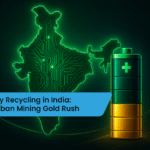

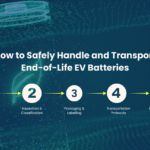
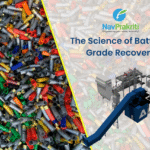

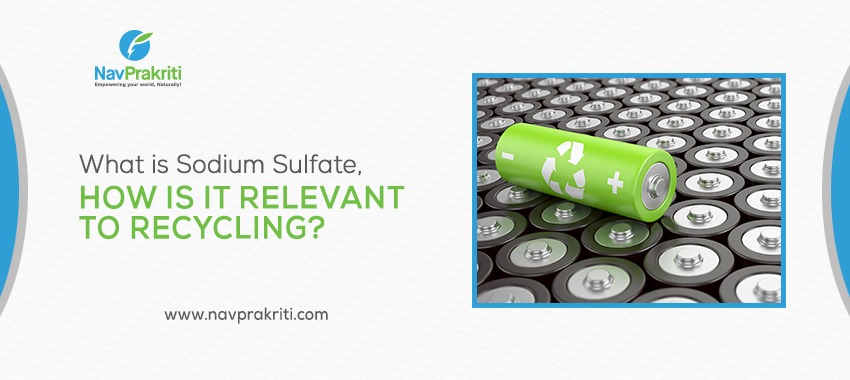
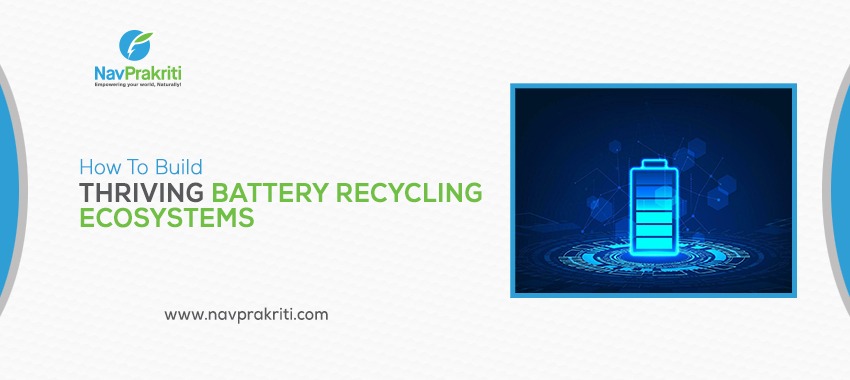


Leave a Reply